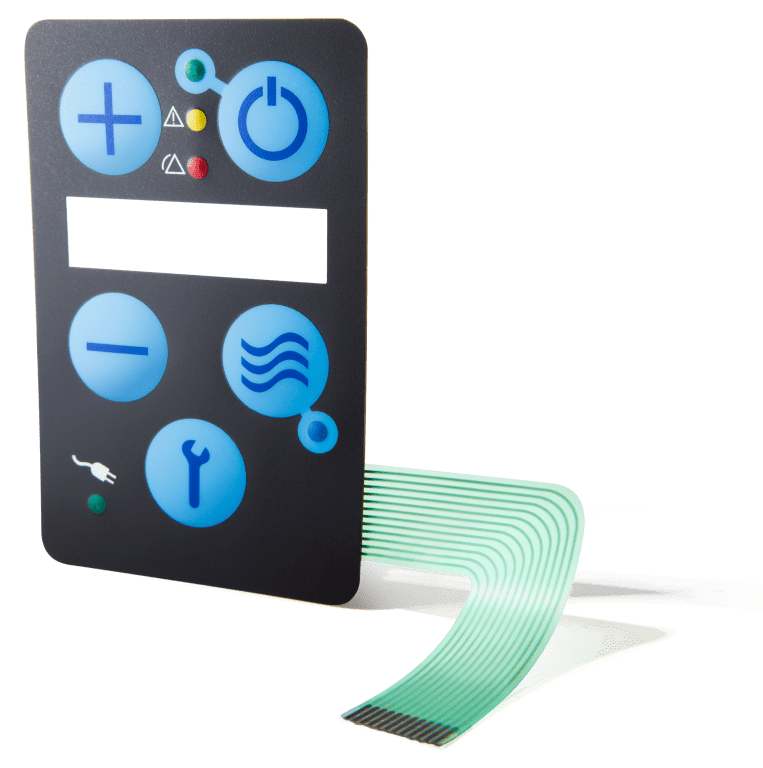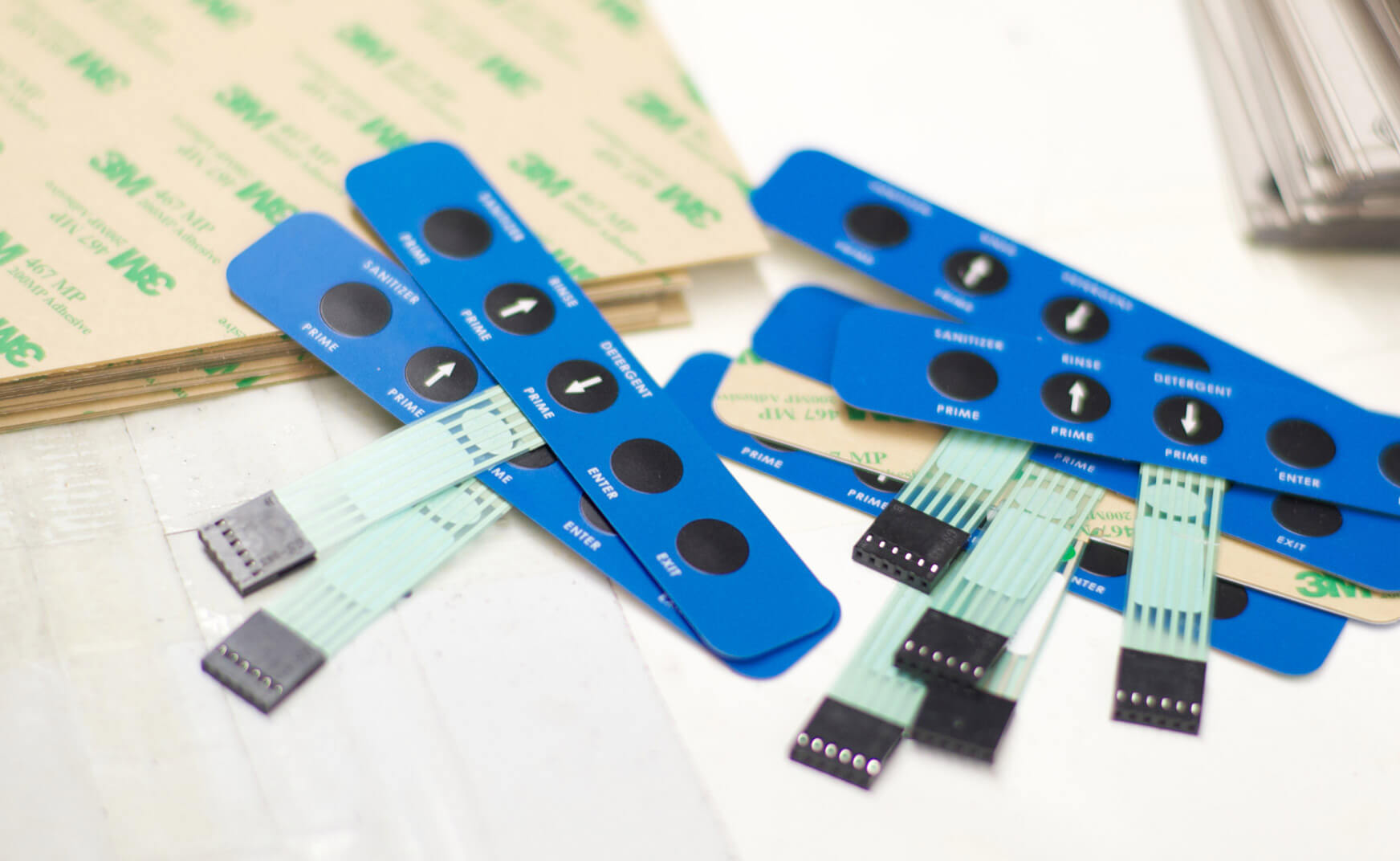If durability matters, sourcing from a reliable membrane switch manufacturer is key.
If durability matters, sourcing from a reliable membrane switch manufacturer is key.
Blog Article
Everything About Membrane Layer Change: Understanding Its Design and Capability
When you think of the control interfaces in modern devices, membrane layer switches often come to mind. These parts are a lot more than just buttons; they blend layout and capability perfectly. Recognizing just how they work and what makes them reliable can transform your perspective on everyday electronics. There are nuances to their style and performance that you might not be aware of. Let's discover what sets membrane changes in addition to various other control systems.
What Are Membrane Switches?

Membrane buttons can likewise be customized regarding form, dimension, and graphics, allowing suppliers to develop unique interfaces tailored to certain products. In general, membrane switches play a significant function in enhancing individual experience throughout a large range of applications.
How Membrane Switches Work
When you press a trick on a membrane layer button, it turns on a simple yet efficient system. The top layer, often constructed from adaptable material, presses down onto a conductive layer under it. This activity bridges the space in between conductive traces, completing an electrical circuit. As quickly as the circuit shuts, it sends out a signal to the device's controller, which analyzes your input.
You'll notice that the responsive feedback differs based upon the switch layout, offering either a soft click or a much more pronounced action. Once you launch the trick, the membrane go back to its initial position, reopening the circuit and quiting the signal. This process happens practically immediately, ensuring a responsive individual experience.
Membrane buttons are preferred due to their longevity and resistance to dirt and wetness, making them perfect for various applications, from home appliances to clinical gadgets. Understanding this operation helps you appreciate their prevalent usage.
Key Components of Membrane Switches
Recognizing the vital elements of membrane layer switches is fundamental for realizing their performance and layout. At the core, you'll find the graphic overlay, which offers the visual interface for individuals. Underneath that, there's a spacer layer that separates the circuit layers, ensuring that they don't make call until pressed. The circuit layer is where the magic takes place; it includes conductive traces that finish the circuit when you push the button. Another vital component is the sticky backing, allowing the switch to stick to surface areas safely. The protective layer guards versus ecological factors and wear, prolonging the switch's life-span. Each part plays a significant duty in ensuring dependable performance and customer interaction. By comprehending these components, you'll acquire insight into how membrane layer switches run and their relevance in numerous applications.
Materials Used in Membrane Layer Switch Layout
The performance and resilience of membrane layer switches heavily rely on the materials utilized in their style. You typically run into polyester and polycarbonate as primary substratums as a result of their excellent toughness and versatility. These products resist scratches and chemicals, making them excellent for demanding atmospheres.
The conductive layers often use silver or carbon, chosen for their reliability and conductivity. membrane switch manufacturer. Silver gives remarkable efficiency, while carbon is a cost-effective alternative. For the overlay, you may consider a matte or glossy surface, depending upon your visual requirements and customer experience
Adhesives play an important role also; they bond layers firmly and guarantee durability. Make sure to pick adhesives that withstand environmental elements like temperature and humidity. Don't forget the value of an excellent printing method for graphics, as it enhances both performance and visual appeal. Selecting the right products will certainly ensure your membrane switch stands the examination of time.
Design Considerations for Membrane Layer Buttons
While designing membrane buttons, it's important to think about different elements that influence their capability and customer experience. Beginning by concentrating on the layout and switch dimension; ensure they're intuitive and easy to browse. Consider the tactile feedback you intend to offer-- will users require an obvious click or a softer touch? Furthermore, believe about the products you'll make use of, as they'll impact resilience and visual appeals.
Do not overlook the graphic layout; clear labeling and shade comparison are substantial for visibility. Validate your design suits environmental elements, like dampness or temperature level variants, which might influence efficiency. Remember the significance of testing prototypes with real customers to gather comments and make essential changes. This iterative process helps you refine the design, confirming it fulfills both functional and aesthetic needs efficiently. By carefully considering these elements, you'll create a membrane switch that improves use and satisfaction.
Applications of Membrane Switches
Membrane layer switches are flexible elements discovered in different applications, from industrial tools to consumer electronics. You'll see their influence in makers that require sturdy interfaces and in gadgets that benefit from smooth styles. Recognizing these applications helps you appreciate the functionality and functionality of membrane switches in day-to-day technology.
Industrial Tools Use
When you're looking to enhance the performance of industrial devices, membrane layer switches offer a reliable solution that combines toughness with straightforward style. These switches are best for extreme settings, giving resistance to dust, moisture, and chemicals. Embrace membrane switches to streamline your procedures and improve general efficiency.
Customer Electronics Combination
In the domain name of consumer electronics, membrane layer switches play an important role in enhancing customer interaction and gadget performance. Membrane buttons likewise assure longevity and resistance to dirt and moisture, expanding the life-span of your electronics. By selecting membrane switches, you boost not just the capability but additionally the style of your gadgets, making day-to-day interactions smooth and delightful.
Advantages and Drawbacks of Membrane Layer Switches
While membrane buttons supply a variety of advantages, they also feature some drawbacks that you should take into consideration. One significant advantage is their portable layout, making them suitable for space-constrained applications. They're also economical, providing a sturdy solution with a reduced production price. In addition, their smooth surface is very have a peek at this website easy to tidy, improving hygiene in settings like health centers.

Membrane layer switches can have a much shorter life expectancy compared to mechanical buttons, especially under informative post hefty use. They can additionally be less responsive, which might influence customer comments during operation. Stabilizing these pros and disadvantages will assist you determine if membrane layer buttons are the best fit for your task.
Frequently Asked Concerns
For How Long Do Membrane Layer Changes Usually Last?
Membrane changes commonly last between 5 to one decade, relying on use and ecological problems. You'll want to review factors like wear, direct exposure to dampness, and temperature level fluctuations to evaluate their durability properly.
Can Membrane Layer Switches Over Be Custom-made for Specific Layouts?
Yes, you can personalize membrane layer switches to fit details layouts (membrane switch manufacturer). You'll have the liberty to choose colors, forms, and designs that match your job's needs, guaranteeing they mix perfectly with your general aesthetic
What Is the Price Range for Membrane Layer Switch Production?
The expense variety for membrane switch production normally drops in between $1 and $10 per system, depending on factors like style complexity, amount, and materials. You can get quotes from makers to find the finest option.

Are Membrane Changes Water Resistant or Immune?
Membrane buttons can be created to be water resistant or immune, depending upon products utilized and building techniques. If you require them for damp atmospheres, ensure you define those demands during the style process.
How Do Membrane Layer Switches Compare to Typical Buttons?
Membrane layer switches are normally thinner and much more versatile than standard buttons, providing a streamlined layout. navigate to these guys They're often easier to clean and incorporate, however could not offer the responsive comments you're made use of to with mechanical alternatives.
Conclusion

Report this page